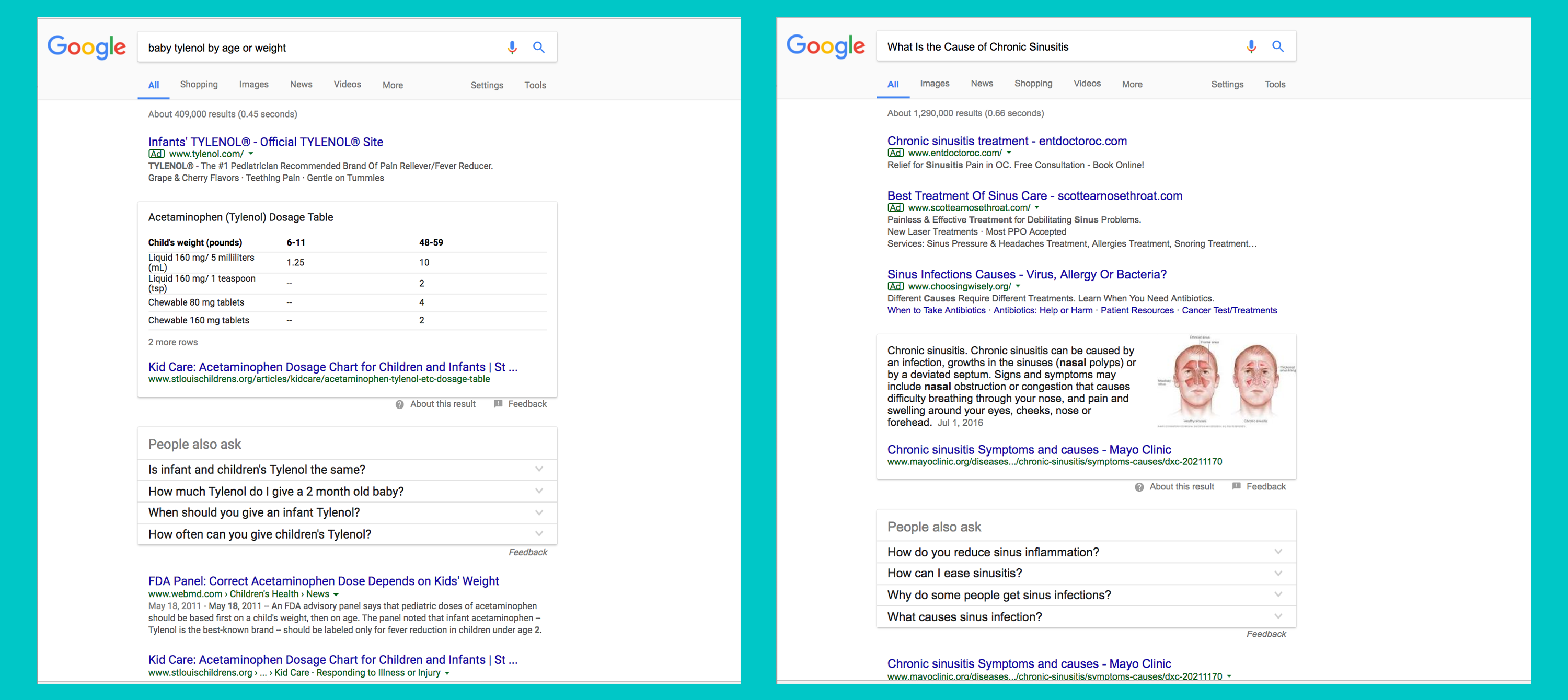The Google Symptom Checker
We’ve all been there; suffering from some mysterious cough, rash or ache and wondering if it’s worth a trip to the doctor. Why not start with an online search and “just see.” Sound familiar?
According to a 2013 Pew study, about 72% of Americans search for health information online with about 35% looking for diagnostic information. Of those who attempt to self-diagnose, just over half go on to make an appointment with a doctor to talk about what they found online. Just last summer, Google reported that roughly 1% of the sites searches, or one in 20 searches, are related to medical symptoms. In Google terms, this equates to millions of searches! Some doctors even report having a “Google stack,” a term that refers to the pile of print-outs from Google they receive from patients.
Ask any doctor with a “Google stack” and he or she will tell you that health content on the web can be difficult to navigate, and tends to lead people from mild symptoms to scary and unlikely conditions, which can cause unnecessary anxiety and stress. Veronica Pinchin, Google's Product Manager, stated that "After 20 minutes digging through health forums, chances are you're overwhelmed by all the complicated medical terms and breaking out in a sweat—whether that’s related to the headache or the overdose of info is unclear!”
However, there are also many credible sources online too. And now, Google wants to help you separate the wheat from the chaff. To improve the quality of health-related search content, Google has enlisted the help of doctors, specialists, medical illustrators, Harvard Medical School, the Mayo Clinic, and other credible sources of medical information to develop in-depth information for more than 900 health and medical conditions. This curated information appears to the desktop and mobile user in visual “cards”— visualizations of data that could come from either source—resent in the search results.
Google Symptom Checker was launched in May 2012 and has come a long way since then. In November 2012, it began appearing for medications, including brand, generic and OTC keywords. In February 2015, the Google Symptom Checker began appearing for health conditions featuring content from the Mayo Clinic. In June 2016, there were around 900 symptoms in the Google Symptom Checker database.
What’s more, when searching for a symptom keyword, Google also minimizes or eliminates completely the number of paid ads you are shown, making it more likely for users to view the organic listings or the information located in the knowledge graph.
What Medical Marketers Need to Know
Does your drug or device help eliminate a certain symptom, such as sinus pressure, back pain or gingivitis? If so, chances are you were relying on Google AdWords pay-per-click (PPC) advertising to capture some of the search traffic for this symptom. You may have noticed that over the past few years your search inventory has dramatically dropped thanks to the advent of the Google Symptom Checker. Campaigns that were once a boom to your business are barely performing. If you haven’t seen this cut in to your advertising success, chances are you will. Google plans to cover many more medical conditions, as well as extending it to other parts of the world.
While the Google Symptom Checker is a great tool for users, helping them avoid the stress and anxiety that often accompanies symptom searches, it’s been a headache for marketers who must now increase their search engine optimization (SEO) efforts to appear in the organic listings or, again using SEO tactics, aim for their content to appear in the Google Knowledge Graph.
The Google Knowledge Graph uses structured data to provide detailed information on various topics in addition to the search engine results. Although the Knowledge Graph comes in many formats, the one you may be the most familiar with is the Featured Snippet, which displays at the top of organic search results. The goal of the Featured Snippet is to help the user resolve their inquiry without having to navigate to any other site.
Claiming a Featured Snippet requires that you focus content structure on answering key questions in a factual manner and using specific on-page HTML structure to ensure that Google can easily and cleanly see and pick up the answers. The most popular Features Snippets are the list, the table and the definition.

You might doubt your ability to claim a Featured Snippet. After all, it’s difficult enough climbing up the search engine ranking results. Good news here! Research from getstat.com, who analyzed one million high cost-per-click search engine result pages (high-CPC SERPs), found that 70% of snippets came from sites outside of the first organic position. What’s more, while you may think making your content accessible without a click-through would tank the traffic to the cited source, it turns out that curiosity trumps convenience. A number of case studies suggest that featured snippets often increase traffic to the cited domain. This means lower-ranking websites have a chance at passing up their competition.
Google’s mission for the past 20 years has been to “organize the world's information and make it universally accessible and useful.” What benefits the user will always top what is best for companies like yours. However, by staying on top of important SEO trends like this, you can continue to stay competitive and be found online.


